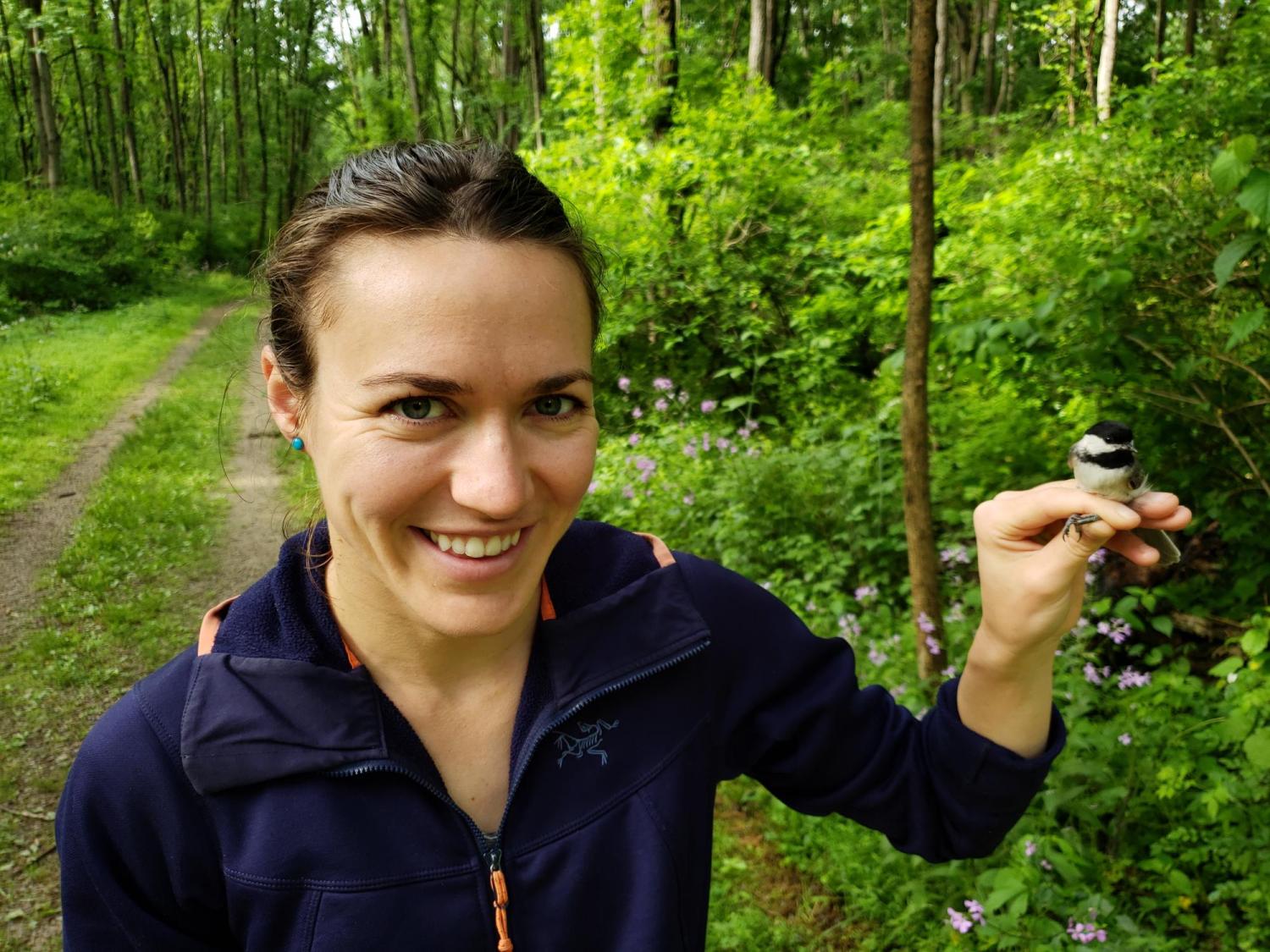Thoughts from PhDs in the Field: Angela, Erik, and Kathryn

Angela went to Pennsylvania. Erik went to Montana, and Kathryn posted up at the CU Mountain Research Station. Below, find some of each of their thoughts on their experiences:
Angela:
I started out my summer field season in Pennsylvania in and around the Lehigh University campus. I had the opportunity to work with our collaborators in Amber Rice's lab. Working with chickadees was a good experience and I have a better idea of how field sites with artificial nest snags or boxes are set up. I got to see lots of cute chickadee nestlings and get experience with handling them. I also enjoyed being able to spend time in the beautiful, green, and full-of-life East Coast.
Erik:
Mid-June I went to southern Colorado to do some work in the Sangre de Cristo range with some collaborators, just south of Cuatro Peak. We worked down here for about a week, catching Brown-capped rosies along a ridgeline at about 13,000 ft. We ended up catching 7 rosy-finches, banding each one and taking blood for some population-level research questions. The two pictures of birds below are from this area.
Then in early July, I spent some time in the Bitterroot range in western Montana. I went to this area to search for areas of hybridization between the Gray-crowned and Black Rosy-Finches (which had previously been reported in this area). I did end up finding some finches up there, and am planning some field work to this area next summer (see below for pictures of the sites where we found them). The goal is to sample some of these individuals and compare them genomically to more "pure" parental species. From these data we can begin looking at how these two populations might be exchanging genetic material, and start to look for genomic regions associated with plumage difference between these groups.
Kathryn:
I spent the late spring and early summer catching as many chickadees as I could at feeders and creeks along Boulder Canyon. These chickadees were outfitted with metal bands and unique color combos so we can tell individuals apart. I also collected some back feathers for a collaborative project with Dr. Quandt’s lab exploring fungal associations with chickadee feathers. So far, there are lots of funky, fuzzy colonies growing and some have been sent off for sequencing. We also developed a protocol for constructing nestboxes and built over 100 this summer that will be put up all around the MRS and Boulder to house future chickadee families. All in all, it was a successful field season with lots more work to be done exploring chickadee breeding in Boulder, CO.


